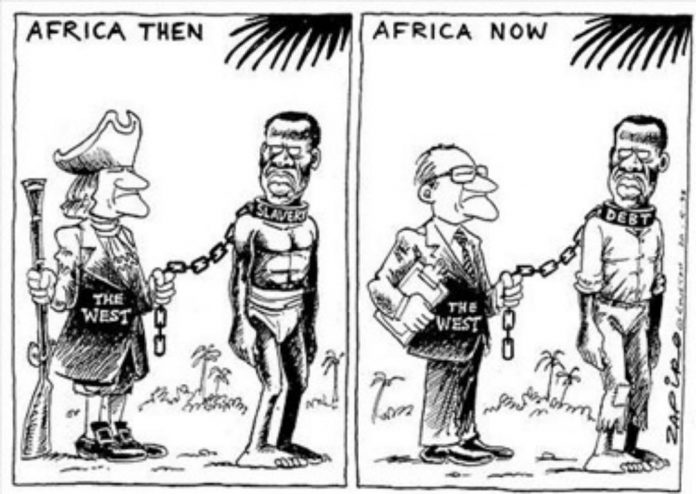Nigeria is the most populous black nation in the world The country was established in 1914 by the British colonial masters who merged the Northern and Southern Protectorate as well as Lagos Colony, all of which they had created in the 19th century to exploit and dominate the poor people in what became Nigeria, for the benefit of British capitalism.
There were well over 260 ethnic nations in the areas colonized. Some were governed by local ruling classes as kingdoms or empires and some as city-states. Flag independence was granted to a new set of native leaders on 1 October 1960.
These were bosses who also primarily served the interests of capital. But they were under pressure to provide some “dividends” of independence to the masses. And with the abundance of labor power and mineral resources in the country, they carried out recorded some developmental strides.
These contributed to the description of Nigeria at the time as “the giant of Africa”. The trappings of greatness were reflected with quite a number of firsts for Africa, including the first television station on the continent.
Sixty-one years down the line, the giant of Africa has become a “sleeping giant”. The rich have become richer, while the poor have become immensely poor
In 2018, this richly blessed and endowed land became the poverty capital of the world with over 102 million Nigerians living in abject poverty. This is despite the fact that Nigeria is the 7th largest producer of crude oil. If the wealth of the land is used to meet the needs of the masses instead of satisfying the greed of a few people, there would be no poverty in the country.
Corruption is one of the ways in which the masses are made poor while the rich few steal our resources. In fact, the country has been tagged as “one of the most corrupt countries in the world”.
This article looks at the reason behind the never-ending and indeed worsening state of poverty of the masses. And what we can see is that from the period of colonialism to the present era of neoliberalism, it is the bosses who have been ruling us. And whether as white colonialists or as local bosses, their interests have always been to increase their profits by taking the wealth which our labor creates.
This is the first in a 3-part series of articles that interrogates this matter.
The neo-liberalism was introduced in 4 ways as outlined here:
(A) Historically, the Nigerian state adopted two main development strategies vis:
1) The public sector-led, state-regulated, import substitution and Industrialization strategy of 1946
2) The private sector-led, market forces-driven, export-oriented development strategy of 1986
The first strategy was introduced by the colonial powers who supported the domination of six European firms. These were who grouped themselves into oligopolistic organizations such as the Association of West African Merchants. The key companies involved in this regard were:
1) United Africa Company – UAC
2) John Holt
3) Paterson Zochonis–PZ and Co.
Note: all the above are British
4) Compagnie Francaise del’Afrique Occidental –CFAO
5) Societe Commerciale del’Oust Africaine – SCOA
6) Union Trading Company –UTC
Note: CFAO & SCOA are french, while UTC is Swiss (this shows colonialism was more than just one colonial master exploiting a colony. It is a system of imperialism)
These firms controlled 70% of Nigeria’s imports and exports at the beginning of the last century. In the financial sector, two firms monopolized the financial market, they were:
1) The British Bank of West Africa (BBWA) – 1ST Bank
2) Barclays Bank – Union Bank
(B) The Marketing Boards -The British administration in Nigeria established a marketing Board and used the Board to extract surplus from Nigerian farmers. With this surplus, the administration launched “LOAN and GRANTS scheme for growing the private sector.
This singular act has continued till today as monies are taken from the public sector to the private sector.
(C) Gowon’s policy of indigenization:
This policy was to increase the participation of Nigeria’s businessmen in the national economy and to increase capital accumulation by the Nigeria entrepreneurs and the retention of that capital within the domestic economy.
NOTE: The primary aim of this policy was to create an indigenous capitalist class in Nigeria,
(D)The introduction of SAP in 1986 by the government of IBB, helped to bolster a rentier private sector for market forces – while drawing funds from the public sector, bearing in mind that the SAP policy was a recommendation of the World Bank.
In response to protests by workers and youths, against SAP, the IBB regime and subsequent governments had to introduce some state-funded programs called pro-poor programs. The World Bank saw that SAP was leading to revolts in several countries and thus advised as well that some cosmetic reforms be put in place. It described these as Programs of Action for the Mitigation of the Social Cost of Adjustment (PAMSCAD). In Nigeria, the PAMSCAD programs were:
1) DFRRI – Directorate of Food and Rural Road Infrastructure.
2) Better Life Program for Rural Women
3) Family support Program
4) FEAP – Family Economic Advancement Program.
5) SOW – School on Wheel Program
NOTE: Despite billions of public funds spent on the pro-poor programs, the level of poverty continued to rise. In 1980, according to World Bank figures, the level of poverty in Nigeria was 28.1%. By 1985, on the eve of the introduction of SAP in 1986, the poverty level has risen to 46.3%. By 1992, after six years of SAP, the Poverty level reduced to 42.7%.By the time Obasanjo came to power in 1999, the poverty level stood at 70%. And by 2018, Nigeria became the poverty capital of the world.
banks.
The Olusegun Obasanjo presidency deepened neoliberalism in Nigeria. On coming to power in 1999, Obasanjo introduced a set of cosmetic reforms, namely:
1) PAP –Poverty Alleviation Program
2) NAPEP – National Poverty Eradication Program
3) Special Program for Food Supply (SPFS)
4) Poverty Reduction Strategy Program (PRSP)
Note: These programs were recommended by the World Bank and FAO (Food and Agricultural Organization)
In 2003, with the purpose of consolidating the expansion of a national bourgeoisie, President Obasanjo introduced a medium-term development strategy expected to last from 2003-2007. This program was known as NEEDS – National Economic Empowerment and Development Strategy. This was expected to be complimented at the State level by SEEDS, and at the local level by LEEDS.
The NEEDS document was based on 4 strategies, but this article will focus on the TWO most impactful and important to this discourse: –
1) To restructure public institutions, right-size them to be more “efficient: and transparent and to reduce public expenditure.
2) Growing the private sector – The document asserts that the age of leaving the commanding heights of the economy in the hands of government was gone. It argued that there was a need to introduce a market-driven, private sector-led economic development strategy. This strategy institutionalized deregulation and liberalization. It also deepened privatization which had been started since the SAP period. deregulation
In summary, the NEEDS strategy was anchored on market forces-driven and private sector-led development.
But the NEEDS strategy was a colossal failure. It did not lead to improvement in the lives of the poor masses. It also did not lead to building a strong indigenous capitalist class as envisaged by the government. The private sector still remains dominated by a few multinational corporations (MNCs) and local capital’s private sector still remains heavily dependent on the public sector.
by Alpha J. Marshall









